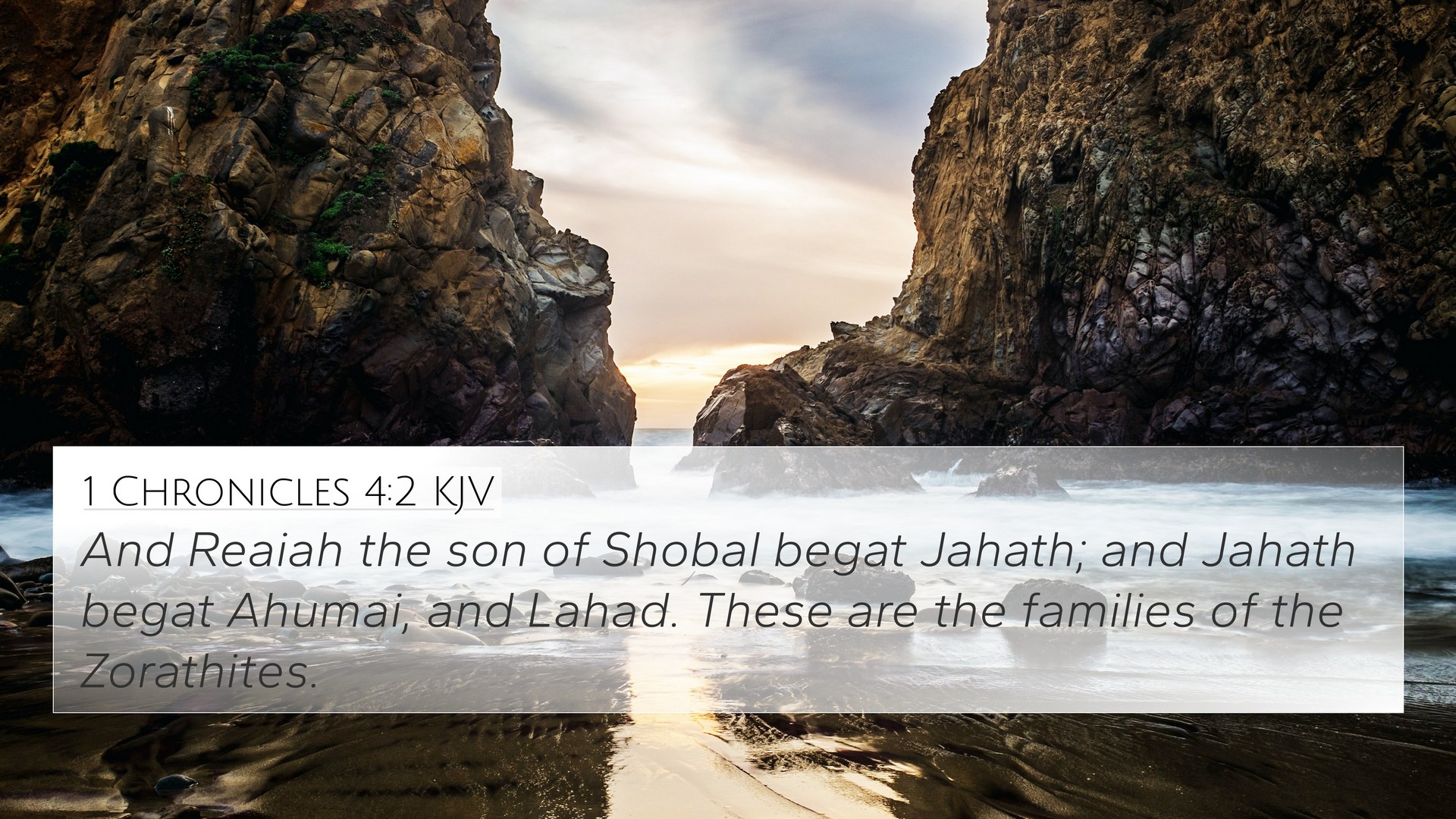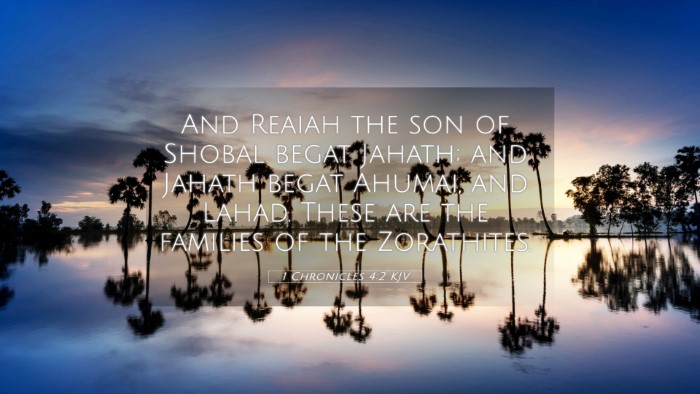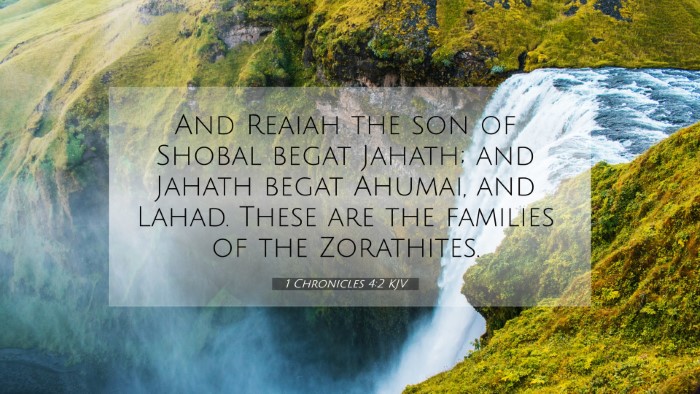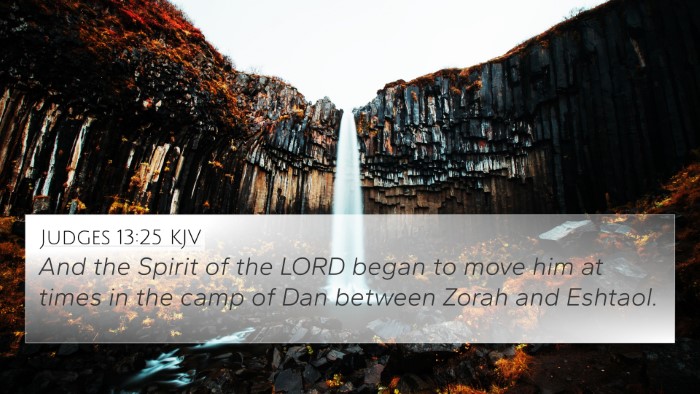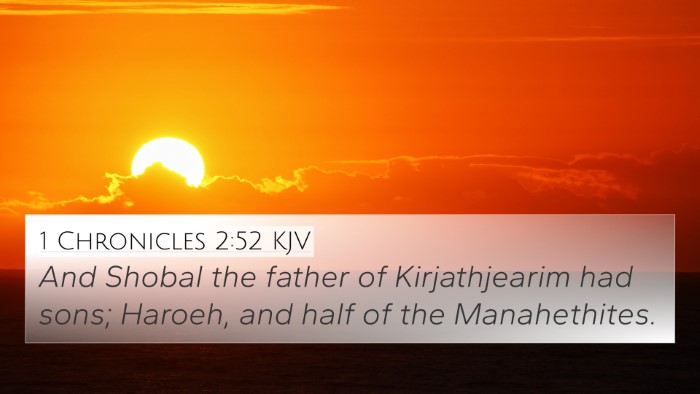Meaning of 1 Chronicles 4:2
1 Chronicles 4:2 states:
“And Ruin was the father of Ahab, and Ahab was the father of Ahijah.”
This verse appears in a genealogical context, presenting a line of descendants crucial to the history of Israel. The importance of lineage in the Jewish culture cannot be overstated, as it establishes identity, heritage, and the legitimacy of familial claims.
Insights from Public Domain Commentaries
-
Matthew Henry:
Henry emphasizes the significance of each name mentioned in genealogies, noting that these verses provide not only a record of descendants but also a reminder of God's faithfulness to His promises. Each name reflects a part of Israel’s journey and serves a purpose in the divine plan.
-
Albert Barnes:
Barnes points out that the names recorded are part of God's covenant with Israel, illustrating how God preserved a remnant through generations. He indicates that genealogies connect individuals to their larger narrative in Scripture and highlight the continuity of God's work among His people.
-
Adam Clarke:
Clarke elaborates on the Hebrew meanings behind the names, suggesting that understanding these can offer deeper insight into the character of those named. He mentions that lineage is a recurring theme throughout Scripture, underscoring its relevance and importance.
Connection to Other Bible Verses
This verse relates to several other scripture passages that emphasize genealogies and the importance of lineage in both the Old and New Testaments:
- Matthew 1:1-17 - The genealogy of Jesus Christ, emphasizing His lineage from David.
- Luke 3:23-38 - Another account of Jesus' genealogy, connecting Him back to Adam.
- Genesis 5:1-32 - The genealogical record from Adam to Noah, showcasing God’s preservation of humanity.
- Ruth 4:18-22 - The genealogy of David, linking back to Ruth, a key figure in Israel's history.
- 1 Chronicles 2:1-55 - A detailed account of the descendants of Jacob, highlighting the importance of heritage.
- Hebrews 7:14 - References the priestly lineage of Jesus from Judah, which connects back to previous genealogies.
- Ezra 2:1-70 - The list of those who returned from exile, reinforcing the importance of identity in God’s people.
Thematic Connections
The genealogical records found in 1 Chronicles 4:2 and related scriptures reveal major themes throughout the Bible:
- Divine Promise: Each lineage emphasizes God's commitment and fulfillment of His promises to Israel.
- Identity: Genealogies serve to establish identity, ensuring clarity in God’s plan through specific lineages.
- Continuity: The continuity of God’s providence in history is underscored through these records, showing how God works across generations.
- Redemption: Connections between genealogy and God’s redemptive plan can be traced throughout scripture.
Understanding Genealogies in Scripture
Genealogies function as a vital tool for Biblical cross-referencing:
- They reveal thematic connections, allowing readers to see God's unwavering faithfulness.
- They establish inter-Biblical dialogues, enhancing comprehension of overarching Biblical narratives.
- They guide readers in linking various Bible scriptures, enriching personal studies and theological understanding.
Tools for Cross-Referencing
For those interested in exploring Bible verse connections, various resources can assist in digging deeper:
- Bible Concordance: A tool that lists words and phrases and their occurrences throughout scripture.
- Bible Cross-Reference Guide: Resources that compile related verses for easy study.
- Bible Reference Resources: Encompass commentaries, lexicons, and interlinear Bibles for thorough understanding.
- Cross-Referencing Bible Study Methods: Techniques for uncovering rich themes and doctrinal connections.
- Comprehensive Bible Cross-Reference Materials: Library of resources available for extensive study.
Practical Application
Studying genealogies such as in 1 Chronicles 4:2 allows for significant spiritual growth:
- Understanding God’s Plan: Recognize how history unfolded through specific families.
- Connecting with Heritage: Acknowledge one’s place in the story of faith.
- Building Faith: See God’s unchanging nature through generations.
Through these insights, one gains a deeper appreciation for the richness of Scripture and the interconnectedness of its messages. Understanding verses like 1 Chronicles 4:2, coupled with cross-referencing, unveils a profound tapestry woven by God's hand throughout history.
